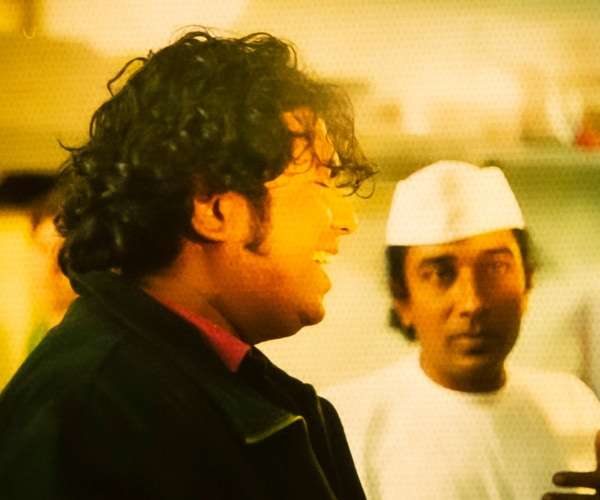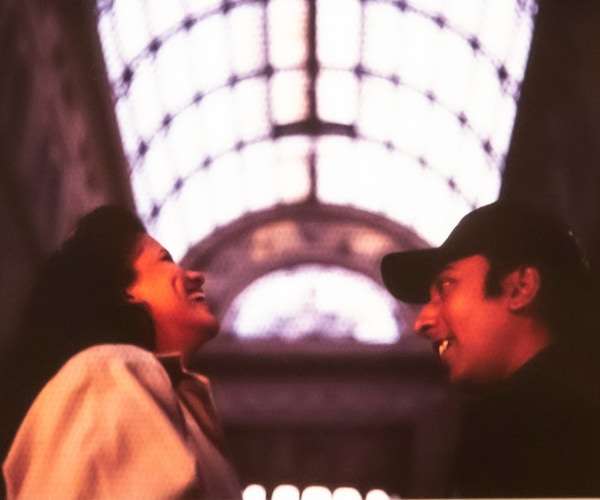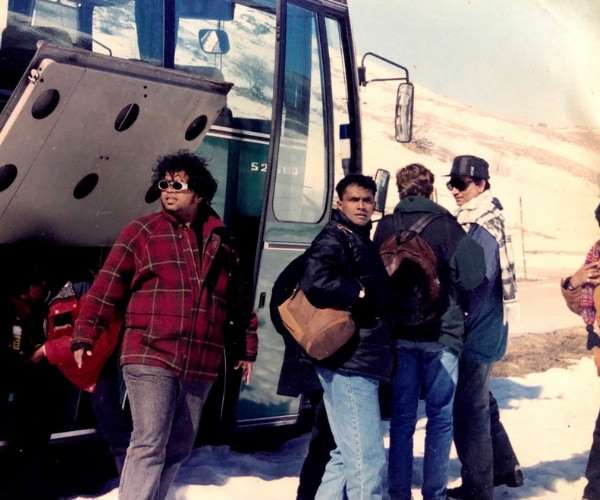
Jun 01 2021.
views 462


It was two movies, A Fish Called Wanda and Caravaggio that rooted my love for the Italian language. In A Fish Called Wanda, Jamie Lee Curtis tells Kevin Kline who was always talking Italian, “Talk to me in Italian”, and their scenes were always very funny. I watched the movie again recently and after visiting Italy fifteen times, understood every word Kevin was saying. He was spouting forth the names of food or cheeses, pronouncing them with an Italian accent. I laughed even harder because I realised I had fallen in love with a language simply by hearing the names of food. Caravaggio on the other hand is a very stylish post-modern film by Dereck Jarman. I fell in love with his life story as well as his paintings and most of all, how he handled light. I tried to make my first feature film much like a Caravaggio painting.
When I returned for summer vacation from the School of Visual Arts in NYC where I was studying, I realised that most of my friends had left or were leaving my village at Koswadiya due to the JVP insurrection in 1988/89, including my childhood friend Chinthaka.
A few years later, when I was invited to screen my film, The Veil's of Maya (Sihina Deshayen) in Napoli, Chinthaka was working for Gustavo Cuccurullo, the great-grandson of one of the producers of one of the greatest movies of its time, The Good, The Bad and The Ugly. This was also my first time in Italy and the moment I stepped out of the airport, I felt like I was in a movie. There was this amazing magical light that caught me by surprise. I fell in love with the light immediately.
Napoli was full of Sri Lankans from my village and about four other adjacent villages. I was invited to numerous dinners, lunches and any meal they could ply me with. I was craving Italian food but they would make me Sri Lankan food. Every time I was out with Sri Lankans, they would brag about the trip to Italy in a container or trunks of cars. I also met a few friends who were supposed to have died during the JVP uprising because they were JVP members. Having heard these stories, I was inspired to make my film Mille Soya, the story of my generation living and working in Italy.
I was really excited and managed to get friends from eight countries to make the film. The paperwork including getting visas was most challenging. In fact, I took all my actors to the Italian embassy and explained that with winter being close, we needed to be there in the winter because I needed to film in the snow. But it took three months and we got our visas on the condition that all of us went and showed ourselves again to the visa officer.
At immigration, every actor was sent through except me. The reason being that my passport looked worn out. Chinthaka came to the rescue using his connections with Gustavo and a lawyer he worked with and I was allowed to get into Italy after a few hours. We had a similar problem at customs but once I showed my National Film Corporation ID, we were good to go.
The hardest part was not having big production managers but rather film students across Italy, with me going personally to rent out equipment and find people. It was expensive and I was frightened that we may not have the equipment we needed. However, one of the students I met during the screening of The Veil's of Maya asked me to meet Nando, who rents out equipment for big films. I met a gentleman dressed in a large black overcoat, dark glasses and gloves. I told him what I wanted and then he asked me, “How much do you have for the camera?” It was a very small amount but he shook my hand and said I could use the camera. “I’m giving you a good deal,” he said. Nando was Fernando Cartochi. Matania Lighting in Napoli was where I got my lighting.
The only thing missing was permission to shoot in the city of Napoli and its surroundings. Chinthaka was by this time working for the Mayor of Napoli Antonio Bassolino and asked for his help. We got our permit within two days. We had a small crew and I remember, when we shot a scene in the centre of a building, even the police came to help clean the place. When we were filming in Roccaraso Barrea, the amazing Passetta Garibaldi helped us find quick locations since we were shooting the film in the style of a road movie. The most wonderful thing about making Mille Soya was that 80% of people who helped were not from the industry but those from Napoli, Capo Posillipo, Borgo Del Castale, Barrea, and Positano.
After completing the movie I learned an important lesson: the larger part of Sri Lanka’s income comes from these migrant workers.
Ever since our ancestors invited the Romans to bring the royal blue lapis lazuli to paint Sigiriya, a colour we didn’t have, cultural ties with Italy have been strong. In 2012, I was very fortunate to organise the first Italian Sri Lankan Film Festival with Deputy Head of Mission Gianluca Rubagotti. Another film project is in the pipeline to be filmed in Sri Lanka and Italy.
To me, while my love affair with Italy entwines language, culture, music, art and Caravaggio, it is that light I saw in Italy, which I normally see only in the movies that make that love for Italy, totally holistic.
0 Comments